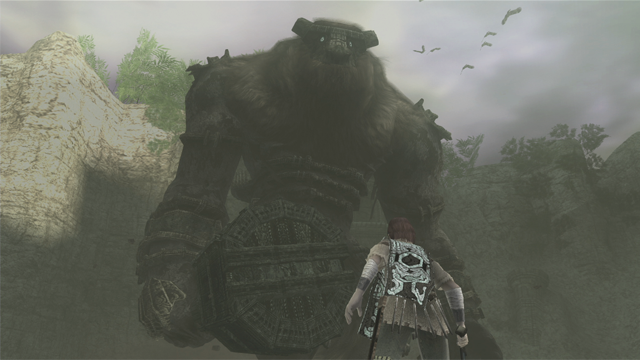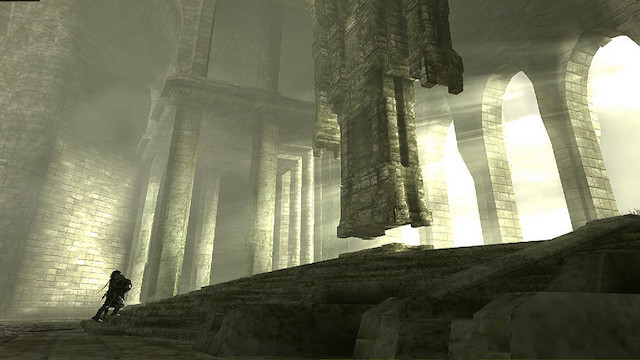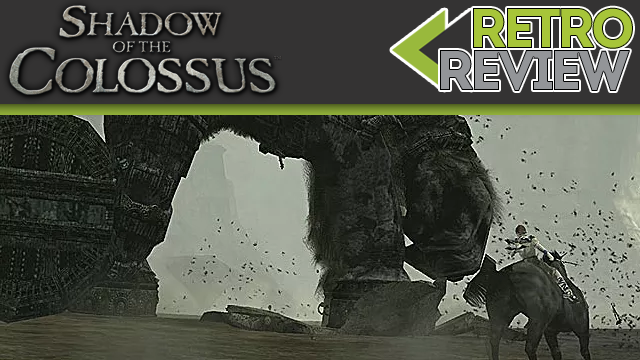Shadow of the Colossus is a powerful game to experience. This PlayStation 2 classic boasts an intense attention to detail, an unparalleled drive for minimalistic design and powerful orchestral score — elements which come together to craft a title which isn’t just memorable, but a must play for anyone that loves gaming. It’s easy to call it not only one of the best video games ever made, but an early example of how they can be accepted as an art form.
Set in a expansive yet empty world, the Shadow of the Colossus has a simple premise — Wander, a young warrior, crosses the bridge to what is only known as the Forbidden Land with the lifeless body of a young woman named Mono. An entity of unknown intent named Dormin greets him, promising he can bring back Mono if you slay the sixteen colossi who roam the land, but will pay a great price for doing so. Together with his horse, Agro, he sets off a journey to slay the colossi and save the lifeless girl.

Character relations and motivations are never given much depth beyond this, instead the developers opt for the player to make those connections in their own minds. Why does Wander want to save Mono so desperately? Was it his fault? What kind of bond do these characters share? It’s undeniable that by the end of the story, I felt invested in Wander and Agro because of the adventure we took together. But your input as the player is essential in creating a connection to this world — you share the struggle of Wander, but can only watch as he takes punishment for his actions helplessly.
A beautiful, empty world
“This is one of the most beautiful PlayStation 2 titles ever created”
The Forbidden Land itself is beautifully realized as a lonely, atmospheric place, backed up with very impressive draw distance considering its original 2005 release. (The framerate issues fixed in the new PlayStation 3 port.) The ground quakes and shifts with each step from the colossi, and a dynamic physics engine creates realism in the weight of each movement, with Wander helplessly swinging back and forth on the back of the monsters. Loading times are cleverly disguised, leading to a seamless experience which continually draws you in. This is one of the most beautiful PlayStation 2 titles ever created, and its PlayStation 3 port holds up very well for its generation jump.
It can be said that Shadow of the Colossus thinks about every aspect of its minimalist design intensely. The world is devoid of life outside of the sixteen boss battles – no enemies to fight, no items to find, and no side quests to complete. Because of this black and white approach to the game’s design, polish is at its highest here. Every aspect of the game feels well thought out, purposely crafted for a reason. Each monster fought is different from the last and needs different tactics to take down. Everything in this game world has a purpose and reason for being there.
Surmounting Your Obstacles
The meat of thegameplay comes down to two parts — traveling on horseback across the fields of the Forbidden Land, and epic battles against the (mostly) gigantic colossus. Fighting these creatures is dramatic and intense, with beautiful, orchestral music empowering every moment. The moments riding on Agro are relaxed and fueled by ambiance, wind howling faintly behind the rhythmic sound of his hooves. The juxtaposition provides ample relief between the showdowns, complementing the other fantastically and giving the player time to take in the environment and the progress of the adventure thus far. The sound design here is almost faultless and still packs its punch 11 years on.
“Each colossus is unique in its design and weaknesses, giving great variety to each encounter.”
The game’s mechanics are introduced through a simple short cliff section where the player learns about the most essential controls before facing off against the first enemy. A circular grip gauge sits above the player’s health bar, which depletes the longer you stay held to a colossus. There’s a great underlying tension in trying to manage your grip gauge while trying to find the perfect moment to attack the enemy. You can opt for reliable, smaller strikes or a large, fully charged impalement, the latter granting great satisfaction with each successful blow.
Colossal Battles
Each colossus battle plays out like a boss fight, a puzzle which the player needs to solve to reach the weak spot of the enemy. Using the environment, the sword and the bow and arrow, Wander must climb to shining symbols scattered across the giant creature’s bodies and use his blade to damage them. The solution can be as simple as waiting for an opening to knock them down to navigating a platforming structure so you can find your opening to leap onto their bodies. Each colossus is unique in its weaknesses and method of approach, giving great variety to each encounter.

What’s more is that killing a colossus results in what is likely a varying amount of satisfaction from player to player. These creatures feel alive and unique – though overcoming them is a feat in itself, there’s an air of melancholy in your victory. Congratulatory music has a dramatic yet sad note to it, and each victory ends with a seemingly painful transportation back to the shrine. As each statue crumbles with victory and lights of fallen colossus shine in the sky, this abandoned world slowly feels more and more empty. This melancholy follows you throughout the entirety of the journey.
Surprisingly, your visit to the Forbidden Land never feels cut short. The conclusion is well paced, arriving naturally, never seeking to extend its welcome for the sake of padding. The final moments of the game are bittersweet and heartbreaking, and players of Ico can recognize where certain elements which bond these two games together are placed. It’s an undeniably memorable, engaging, yet simple story which is given gravitas thanks to the player and their role in the outcome.
Verdict
Shadow of the Colossus is a game which lets the gameplay tell its story. It has tight, well-designed gameplay with a simple concept behind it which is executed fantastically. It’s a surprisingly emotional story with an incredible visual and audio aesthetic to support it. But most importantly, it’s a game which earns it’s reputation as a classic because it embraces the most important part of gaming – the player’s input. Shadow of the Colossus isn’t just a beautiful game, it’s a shining example of how games can use interactivity to craft real and memorable experiences, and a must play for anyone who loves game design or gaming in general.







Published: Apr 18, 2016 10:28 am